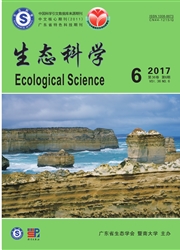

 中文摘要:
中文摘要:
蓝藻水华及其释放的蓝藻毒素给我国很多地区的饮用水安全带来较大威胁.尽管去除蓝藻和净化藻毒素的技术目前已有较多报道,但能同时对二者起作用的技术方法还较少,发展能够同时去除蓝藻和蓝藻毒素的技术显得十分必要.根据前期Fe(Ⅲ)化合物去除微囊藻毒素的工作基础,选取4种不同的土壤对其进行Fe(Ⅲ)改性,并应用于微囊藻毒素的去除.结果表明,黏土含量高低决定土壤本身对毒素的吸附能力强弱;土壤经过离子改性后,其毒素吸附能力与其阳离子交换量大小直接相关,且毒素去除能力较未改性前有显著提高,其中效率提升最高的一种土壤离子改性后其吸附能力增加了约148倍.离子改性土壤对微囊藻细胞同样具有絮凝沉降功能,沉降能力同样随土壤对Fe(Ⅲ)负载能力的提高而上升,使用剂量提高时微囊藻沉降平衡时间明显缩短.在野外蓝藻水华去除实验中,蓝藻细胞去除可以保持与室内实验相近的高去除率,但蓝藻毒素的去除效率有一定的下降,可能与天然水体中其它杂质的竞争作用有关.
 英文摘要:
英文摘要:
Cyanobacteria blooms and cyano-toxins such as the microcystins have brought much threat to the drinking water safety in most regions of China. So far there have been many technologies for removing blooming cells or cyano-toxins,while technologies for removing blooming cells and cyano-toxins simultaneously are still lacking. Thus,it is essential to develop technologies for removing blooming cells and cyano-toxins simultaneously. Through our previous work of removing microcystins by Fe( Ⅲ) compounds,we selected four soils for Fe( Ⅲ) modification and used them in removing microcystis cells and microcystin. The results indicated that clay content of soil correlated with the microcystin adsorption capacity. After modification by Fe( Ⅲ),the cation exchange capacity(CEC) of soil determined soils' adsorption capacity of microcystins. Moreover,removal ability of microcystins by soil was promoted significantly after Fe( Ⅲ) modification,especially for soil Ⅳ,about 148 times. In addition,Fe( Ⅲ) modified soil could also flocculate the Microcysits cells and flocculation efficiency correlated with the CEC of soil. The increase of Fe( Ⅲ) modified soil dose would shorten the equilibrium time of Microcystis cells flocculation. During application in the field,high removal efficiency of microcystis cells was also got as the results of laboratory experiment,but microcystins removal efficiency decreased due to competition reaction for Fe( Ⅲ) by the Microcystis cells or other organic matter in the natural water.
 同期刊论文项目
同期刊论文项目
 同项目期刊论文
同项目期刊论文
 期刊信息
期刊信息
